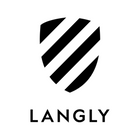Avon Park: Daniel Bedell

In the Highlands County in Central Florida there is a small town that reveals a landscape of diversity. Immigration, religion, citrus farming, ‘hoods’ and the countryside are all part of Avon Park. Washington based photographer Daniel Bedell spent most of his childhood years up until college in this small town. Between 2011 and 2012 he decided to re-visit the town as an adult and unveil those things he missed as a kid. The town barber ‘Larry’ became an important person for him to find his subjects and have very interesting conversations.

What’s your connection to Avon Park?
That’s actually where I spent from age 7 to when I left to go to college. My whole idea was to do a larger personal project as an adult. A lot of people think that when you have spent a lot of your formative years in one place, you have a perception of that place especially in a small town. I think that perception is wrong, there’s a lot of stuff you are usually not aware of when you are seven or eighteen. I grew up in a pretty religious kind of bubble – my family was Seventh Day Adventist. I wanted to see what made Avon Park tick and what was there besides the Christian sphere I had known.

So, what’s your own perception of the town after you visited again?
I felt the town was much more interesting that what I gave it credit. The town is very racially diverse but still very segregated in some ways, like self-segregation. It is built around the citrus industry and you still see the effects of that. A lot of poor white people would go work there and then eventually African Americans came in. Then, white people took a mid-management role and that shifted again when people from Haiti, Cuba and different Latino groups came. Now, mainly Mexicans do the picking. Then, you have all these people that stayed the African Americans, Haitians, Cubans, Mexicans, Dominican and Asians.
And how is the countryside of Avon Park?
So Avon Park is one main road that goes through – the US 27. It is very stereotypical Florida, everything feels that it has been built in the last ten years with stuck out chain stores. Once you get off, you get onto this area that is actually really beautiful and there are all these lakes and landscapes I tried to capture. It feels almost like savannah, and there’s stuff that is just swamp, it’s very diverse.


What about the more urban landscapes?
In terms of the urban landscapes is a town that started 100 years ago and they were hoping it was going to be a big deal and it never materialised. So, there is this very sleepy, old-fashioned feeling downtown that has never been re-done. The barbershop was my central point. I had gone to that barber as a kid and whenever you would get your haircut he would give you a few pennies for a gumball machine, which is pretty exciting when you are a kid.
How did you meet the people you photographed?
I met some people in the barbershop and then in the morning or evening I would just roam around and go in my car, drive around to see if I could find places. I was constantly looking for these pockets of things that felt unique. Some landscape that felt really beautiful and all along you would find those characters. I really came to like the barber, he is the perfect grandfather figure and was almost like a diplomat, he would always go like “no politics talk!” he gave farming tips, he’d done everything!
Has this project shaped your views about American culture?
When you go to some places, even places you have already been, if you come up with a stereotype to describe it all you will miss so much nuance of the place and that sometimes can be the most interesting stuff. It made me realize that even though these people are unsophisticated in a city sort of way they were still very smart and sophisticated about agriculture and lots of other stuff.

A lot of your latest work is around farming. Do you have a special interest in this area?
Doing that project in Avon Park was the start of a couple of things. Up to that point I had been shooting a lot of highly light things and I wasn’t really satisfied with them. Avon Park really shifted my style from this light looking stuff to these much more natural look at things. While I was doing that, I realized that there was so much farming and agriculture that the town was almost built upon it and I didn’t know anything about it. It’s so fascinating to see behind the scenes of these things that you interact with, there’s so much money and thought that goes into it.


Article by: Laura Rodriguez Castro
Browse our Field Notes: Read stories from other content creators in our Interview articles, expand your photography knowledge in our Resource articles or explore the world through the lens in our Travel articles.
- Tags: Interviews

